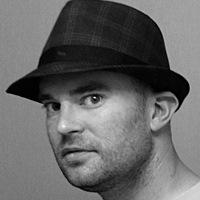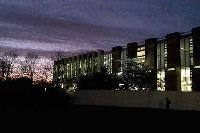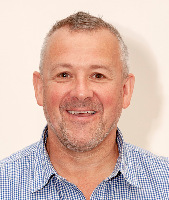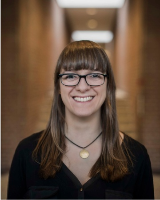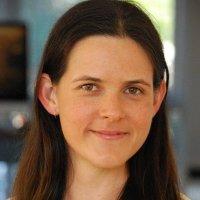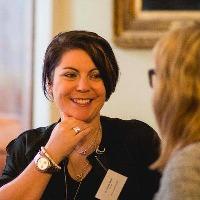Blog
Unless otherwise stated, content is shared under CC-BY-NC Licence
A valediction for validation?
This blog post is an expansion and update of a reply I made to the digipres listerv in response to a query from Bernadette Houghton. It's also part of a response I began making at the Apres iPRES unconference to colleagues who were concerned I wasn't being disruptive enough at this year's iPRES (bless you all). The spirit of this blog post is for them.
This is what Bernadette asked:
"I’m currently doing some research into file format validators (e.g. http://description.fcla.edu/) and during my testing noted that anomalies are very common; at least, for those random files I’ve been checking.
In the real digital preservation world, what’s the best practice in regard to files with anomalies detected? Are the files preserved as they are, or are they resaved (either into the same or a different format) to get rid of the anomalies?
Of course, it may be that the anomalies are a result of a bug in the validator rather than the files themselves. But that isn’t always going to be apparent."
This is an issue many will be familiar with. Applying validation and attempting to make it work for us is not straightforward. In fact, it seems so far from working for us that I'd like to step back a little and consider whether validation is meeting our digital preservation needs, and if there's another direction we could take?
Preserving practice research: on beyond A.B.C.
This post was a collaborative effort between members of the University of Kent Templeman Library: Helen Cooper, Elspeth Millar, Katie Edwards, Rosalyn Bass, Clair Waller and Josie Caplehorne
The University of Kent was founded in 1965 as a new kind of interdisciplinary institution, a ‘community of scholars’. It was based on a collegiate system that actively encouraged both students and staff to go beyond narrow disciplinary boundaries. There were no set departments, and students undertook a compulsory year of ‘interdisciplinary studies’ at the beginning of their undergraduate degrees. It has since taken on a more traditional structure but endeavours to remain true to these values.
The Archives and Records Management Quality Improvement Framework - not just another boring tick box exercise
The Archives and Records Management Services Quality Improvement Framework (ARMS). It’s not exactly a catchy title, is it? Quality improvement frameworks don’t usually inspire curiosity, never mind excitement. If you have come across ARMS or other QI frameworks, you might be thinking this looks like a lot of work, I already know what our strengths and weaknesses are - what are the benefits? There are quite a few:
- Raising your profile
- Supporting you in achieving the archive accreditation standard
- Implementation of the Public Records (Scotland) Act, 2011 and other legislation
- Overcoming challenges, addressing your priorities
- Working more efficiently
- Evidencing your value – to funders and a range of stakeholders
If you’re working in an archive or records management context, pushed for time and sceptical about self-evaluation and improvement frameworks, please read on. I can’t promise you’ll end up being a convert but hopefully you’ll be clearer on the benefits (and maybe even a little excited).
What ARMS is and what it isn’t…
Email is the correspondence of the future (and the present?)
Dave Heelas is the Archivist and Records Manager for Unilever Art, Archives & Records Management
The last challenge we have encountered that I am going to focus on with these short blogs is the question of email. So far not a lot of email content, either individual messages or full accounts have made it to the archive. But with those that have a few questions in how we handle this in the future have arisen.
Although we have workflows in place to preserve email and can be confident that at least in the immediate future this is protected. How to deal with the sheer quantity of it all however is another issue entirely. Current preservation of email has been done in one off ingests with individual emails being sent directly to the archivist dealing with the collection. In the future how we approach this will clearly need to change, the potential of scale for emails that won’t be relevant to our collecting policy will present quite an issue. Gone are the days of the correspondence file, now the majority of people have all their emails in their inbox and outbox and rely on prior knowledge and search tools in order to find older discussions.
Back up or back away
Richard Higgins works in Durham University Library's Archives and Special Collections, where he has worked on developing cataloguing, repository and discovery systems
My suspicion of the backup dates back to the first job where I used a computer as more than an entry terminal and developed a deeper involvement in its business use.
Archiving Scotland's Digital Historic Environment
I’ve been invited to share some initial thoughts and observations as the new Digital Archivist at Historic Environment Scotland (HES), a role I started in mid-August.
HES was formed in 2014 following the merger of two parent bodies Historic Scotland and the Royal Commission for the Ancient and Historical Monuments of Scotland (RCAHMS). It is the lead public body set up to investigate, care for and promote Scotland’s historic environment.
The power of PIDs: Using persistent identifiers to link research outputs in the Netherlands
Dr. Ricarda Braukmann is Program Leader Social Sciences at DANS
“404 Not Found” is very likely one of the most irritating error messages coming from your browser. While being annoying for any website, link rot is especially problematic for important digital resources such as scientific articles or datasets that are expected to be preserved and accessible over longer periods of time. Persistent identifiers (PIDs) have been developed to prevent this problem and to ensure that digital objects remain available and unchanged.
Enabling digital preservation through strategy, collaboration, and community
A lot has been going on since August 2017 when we wrote about our planning for a digital preservation ecosystem at the University of Melbourne.
Work continues on our ten-year digital preservation strategy – we are just over two-and-a-half years in now. The strategy continues to be a strong foundation that aids development of project work to eventually deliver all the elements required for ongoing digital preservation capability.
Storing AV Collections
Dave Heelas is the Archivist and Records Manager for Unilever Art, Archives & Records Management.
This post is the second in a series of three.
A second area that has been raising a lot of questions for digital preservation within Unilever’s collections is the Audio-Visual collections. As we have more and more digitised material it became a priority to move these from the external storage they were on into a more managed and protected environment in the form of the digital preservation repository.
In this short blog I will focus on the digitised AV collections within Unilever.
“Digital Archives in Communities – Practice and Preservation” : A Summary (or at least an attempt)
Sharon Webb is Lecturer in Digital Humanities at the University of Sussex Humanities Lab
Now that the dust has settled on our first 'Digital Archives in Communities – Practice and Preservation' workshop held in June this year, I finally have a chance to contemplate and reflect on the highlights, outcomes, tensions, challenges, and next steps of this project. Rather than go through the presentations and speakers in chronological order, I will instead try to summarise some of the themes and areas of coalescence that emerged.













































































































































